Most of us will have read books about World War II and about the role that children had, sometimes as 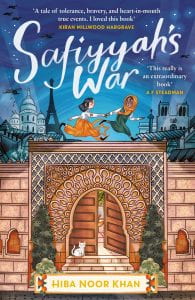 participants and sometimes as observers. This is usually told through the eyes of those on the Home Front or those that are refugees because of persecution. This story takes a different slant, but nevertheless it is a tale that is based on truth and what happened in Muslim communities in war torn Europe.
participants and sometimes as observers. This is usually told through the eyes of those on the Home Front or those that are refugees because of persecution. This story takes a different slant, but nevertheless it is a tale that is based on truth and what happened in Muslim communities in war torn Europe.
The central character in this story is Safiyyah, who lives with her parents in the Grand Mosque of Paris, together with the small community who work in the complex. As the Germans move ever closer to the city, many of Safiyyah’s friends start to move away, but her community feel relatively safe. However, when the bombs start dropping and the German troops move in to the city, life takes a much darker turn. Safiyyah is horrified by what she is seeing happen to the people around her and finds it difficult to understand why her father seems to be doing nothing to help those in need. It is only when she is discovered looking through papers in his office that she is told that he and other members of the community have been providing forged papers and then helping others to escape from the city; in fact there is a whole network based in the grounds of the Mosque. When her father is arrested for helping Jewish neighbours escape, Safiyyah decides that she has to start helping the resistance in their humanitarian efforts. What follows is a breath-taking story of courage and daring, as Safiyyah negotiates the dangers involved in leading refugees through the catacombs of Paris, as well as coping with the death of her beloved grandmother and trying to find a way to save her father.
I absolutely loved this story, which helps tell us about the bravery of people that we hear so little about. This is yet another example of ‘ordinary people doing extraordinary things’, when faced with the inhumanity shown by some political or religious leaders. Safiyyah is a delightful character, but as with most young people she tends to see the world in very defined ways. It is only through experience that she begins to understand that life is far more nuanced and that the adults in her life are having to juggle a multitude of needs. The relationships between the members of the family really highlights the closeness of all the generations and we really feel for Safiyyah when she realises that her grandmother is not going to survive; but she also learns that sometimes older people want to join those who have gone before them. This is such a poignant episode that echoes the experience of all those other people who were losing loved ones during the war, but it also resonates today This is one of those books where you are in danger of running out of superlatives. There is so much hope, even amid the horrors of war and the importance of family and faith shine a real light in the darkness. Thank you to the author for such an inspiring story, which is bound to become a classic in future years.
The author
Hiba Noor Khan
Hiba’s academic background is in Engineering/Physics, having completed Postgraduate study at the University of Oxford in 2015. Since graduating she has worked in the Environmental Sector, as a Refugee Advocacy Worker for The Children’s Society, a Physics teacher and TV presenter. She has a keen interest in social and political affairs and assisted policy research for the Governments Commission on Religion and Belief in Public Life in 2015. Her passion for international development has led Hiba to travel to implement various sustainable development projects in rural Tanzania, and to deliver aid to Syrian refugees in Turkey.
University of Oxford in 2015. Since graduating she has worked in the Environmental Sector, as a Refugee Advocacy Worker for The Children’s Society, a Physics teacher and TV presenter. She has a keen interest in social and political affairs and assisted policy research for the Governments Commission on Religion and Belief in Public Life in 2015. Her passion for international development has led Hiba to travel to implement various sustainable development projects in rural Tanzania, and to deliver aid to Syrian refugees in Turkey.

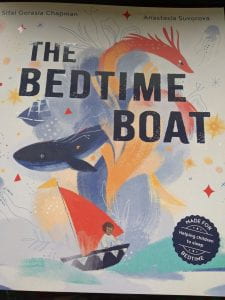 adults, who in this fast paced world of ours, find it very difficult to find that calm feeling that will allow them to sleep. Over the last few years and particularly since the pandemic, we have all become more aware of our well being and mental health. The importance of a good night’s sleep is well known, but giving yourself the sense of calm that is needed to sleep, that is not so easy. thankfully there is advice out there to help us and our young people to relax and sleep.
adults, who in this fast paced world of ours, find it very difficult to find that calm feeling that will allow them to sleep. Over the last few years and particularly since the pandemic, we have all become more aware of our well being and mental health. The importance of a good night’s sleep is well known, but giving yourself the sense of calm that is needed to sleep, that is not so easy. thankfully there is advice out there to help us and our young people to relax and sleep.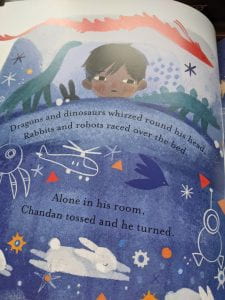 uses the concept of a boat (placed on the tummy) in order to calm and soothe breathing. But Chandan is a child with a lot of imagination and he envisages a range of sea based problems that need dealing with; from pirates, whales, and sharks all of these fears have to be dealt with. His mother uses the constant repetition of “Watch the boat, Chandan, it floats
uses the concept of a boat (placed on the tummy) in order to calm and soothe breathing. But Chandan is a child with a lot of imagination and he envisages a range of sea based problems that need dealing with; from pirates, whales, and sharks all of these fears have to be dealt with. His mother uses the constant repetition of “Watch the boat, Chandan, it floats 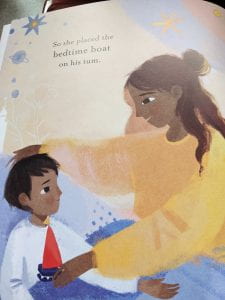 on the ocean. It rises and falls with your breath’s gentle motion.” This helps bring a symmetry to the flow of the story and also a gentle rhythm which becomes really obvious and calming if you read the story out loud.
on the ocean. It rises and falls with your breath’s gentle motion.” This helps bring a symmetry to the flow of the story and also a gentle rhythm which becomes really obvious and calming if you read the story out loud.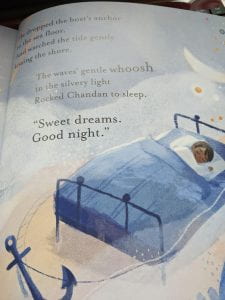
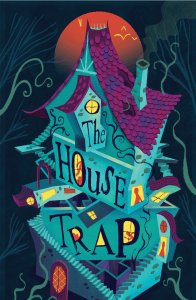 I suspect that we all have experience of houses that are run-down, creepy and have stories told about them. I still remember as a child a house, on my walk home from town, that we had been told was inhabited by a witch! Needless to say we always walked on the opposite side of the road, even though we never saw this person.
I suspect that we all have experience of houses that are run-down, creepy and have stories told about them. I still remember as a child a house, on my walk home from town, that we had been told was inhabited by a witch! Needless to say we always walked on the opposite side of the road, even though we never saw this person.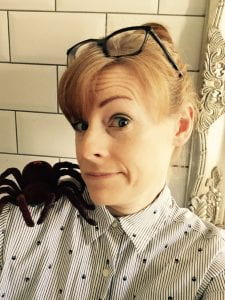 down she knew she could be both.
down she knew she could be both.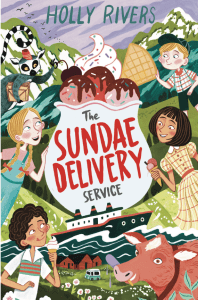 return. Oh, how I wished that I had taken it with me (the explanation will follow shortly.) I had the great pleasure of reviewing Holly’s previous book about “The Boy in the Post” and so it was delightful that I would be able to enjoy the new adventure featuring the three Shalloo siblings, Orinthia, Seafra and Taber.
return. Oh, how I wished that I had taken it with me (the explanation will follow shortly.) I had the great pleasure of reviewing Holly’s previous book about “The Boy in the Post” and so it was delightful that I would be able to enjoy the new adventure featuring the three Shalloo siblings, Orinthia, Seafra and Taber.
 Norway, starting at Bergen. The story brought back so many lovely memories, especially of the Funicular and the amazing views that you get from the top, but it also reminded me of the arrival into Bergen and the astounding scenery surrounding it. Thank you Holly for creating such a wonderful story and for giving us an insight into the beauty of another country.
Norway, starting at Bergen. The story brought back so many lovely memories, especially of the Funicular and the amazing views that you get from the top, but it also reminded me of the arrival into Bergen and the astounding scenery surrounding it. Thank you Holly for creating such a wonderful story and for giving us an insight into the beauty of another country.
 Jones. She spent her childhood in Wales, wishing that she was Pippi Longstocking, and after graduating spent time working as an actor, broadcaster and cheese-seller, until one day she had the idea to pen a story about a tenacious young inventor named Demelza. Holly’s days are now spent penning new stories as well as leading drama, craft and bushcraft classes for children. She lives in Brighton with her girlfriend and still wishes that she was Pippi Longstocking.
Jones. She spent her childhood in Wales, wishing that she was Pippi Longstocking, and after graduating spent time working as an actor, broadcaster and cheese-seller, until one day she had the idea to pen a story about a tenacious young inventor named Demelza. Holly’s days are now spent penning new stories as well as leading drama, craft and bushcraft classes for children. She lives in Brighton with her girlfriend and still wishes that she was Pippi Longstocking.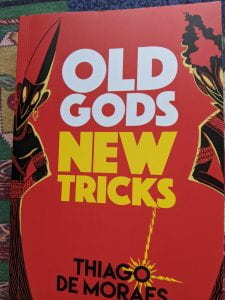 mythologies of other parts of the world. It was only when I became a teenager that I began to hear about South American, Asian, African and then American stories. However, these are not myths that are widely known or written about and it is only in the last few years that people have felt able to write about their cultural beliefs and histories; or at least that is my perception, so I apologise if I am wrong about this. I was delighted to read this wonderful story of the Trickster gods, a concept that seems to appear in so many mythologies but about whom I had little knowledge, apart from Loki who is a favourite character at the moment.
mythologies of other parts of the world. It was only when I became a teenager that I began to hear about South American, Asian, African and then American stories. However, these are not myths that are widely known or written about and it is only in the last few years that people have felt able to write about their cultural beliefs and histories; or at least that is my perception, so I apologise if I am wrong about this. I was delighted to read this wonderful story of the Trickster gods, a concept that seems to appear in so many mythologies but about whom I had little knowledge, apart from Loki who is a favourite character at the moment.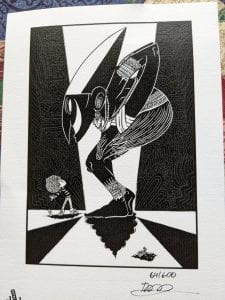 real sense of attitude, so that we really enjoy their antics and the interaction between them. We also see these gods develop a real feeling of friendship with our young heroine, which means they start working together as an approximation to a team. Trixie is a really feisty young girl who learns a lot through the adventures that she goes through. There is a lot of growing up and an understanding that life does not always change in the ways you imagine when you start on a journey. The author is also a very talented artist and his illustrations for the book really focus on the wide ranging cultures that are represented; the black and white images really add to the overall sense of foreboding that we feel as the world begins to descend into darkness. This story also highlights the dependence that this world has on the use of electricity. Even for those of us who grew up without computers, mobile phones and other digital
real sense of attitude, so that we really enjoy their antics and the interaction between them. We also see these gods develop a real feeling of friendship with our young heroine, which means they start working together as an approximation to a team. Trixie is a really feisty young girl who learns a lot through the adventures that she goes through. There is a lot of growing up and an understanding that life does not always change in the ways you imagine when you start on a journey. The author is also a very talented artist and his illustrations for the book really focus on the wide ranging cultures that are represented; the black and white images really add to the overall sense of foreboding that we feel as the world begins to descend into darkness. This story also highlights the dependence that this world has on the use of electricity. Even for those of us who grew up without computers, mobile phones and other digital 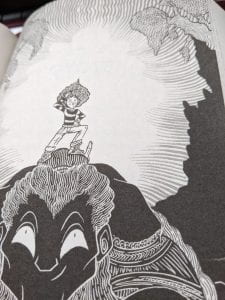 resources , it is still difficult to imagine going back to the days before this source was available. In a real sense this book provides a call to look after our natural resources and not squander what we have.
resources , it is still difficult to imagine going back to the days before this source was available. In a real sense this book provides a call to look after our natural resources and not squander what we have. old friends that I could invite to join in an adventure (much like Trixie, the book’s protagonist, does.) What attracts me to tricksters, beyond their rebellion and creative force, is how fun their stories are. Humour can sometimes be hard to find in myth, so these tales have always stuck with me. Finally, I learned of Huehuecóyotl (and countless other gods I hadn’t know about) whilst researching a non-fiction book I wrote called Myth Atlas, which features lots of stories from different societies.
old friends that I could invite to join in an adventure (much like Trixie, the book’s protagonist, does.) What attracts me to tricksters, beyond their rebellion and creative force, is how fun their stories are. Humour can sometimes be hard to find in myth, so these tales have always stuck with me. Finally, I learned of Huehuecóyotl (and countless other gods I hadn’t know about) whilst researching a non-fiction book I wrote called Myth Atlas, which features lots of stories from different societies.